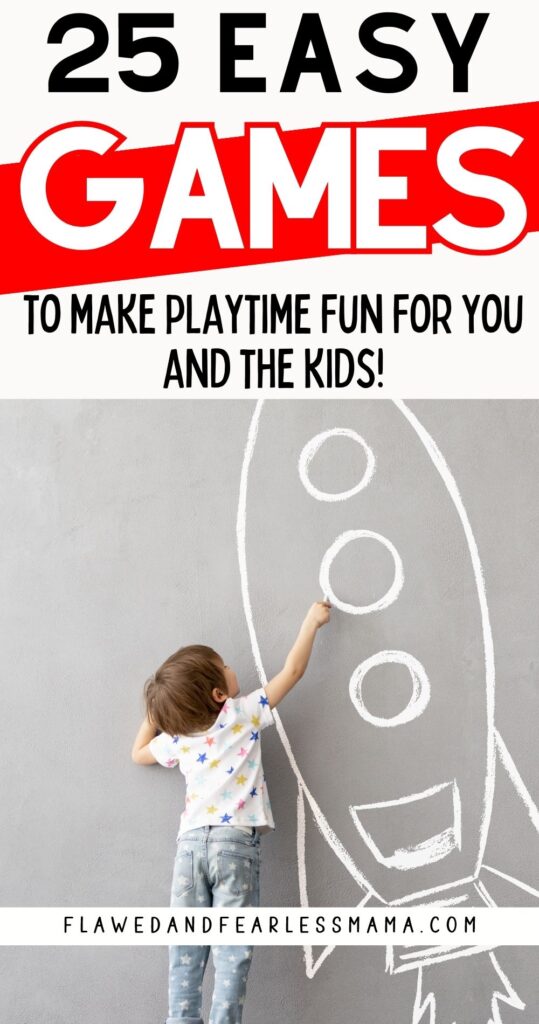When you’re little, play is your job.
Before responsibilities, before the weight of the world settled upon your shoulders, there existed a time of innocence and boundless imagination. It was a time when the world was a playground, and the only limit was the expanse of your own imagination. A time when the simple joys of laughter, exploration, and unabashed curiosity filled each day with wonder.

Just a heads up, this page may contain Amazon, Etsy, and other affiliate links. We may make a small commission from any clicks at no expense to you. Head over to our disclosure policy for more information.
Unfortunately, as we age, we often find ourselves caught up in the demands of adulthood. Play takes the backseat to work, relationships, and the countless responsibilities that come with them. The weight of expectations, societal norms, and the pursuit of success can dim the spark of creativity that once burned brightly within us. We become preoccupied with practicality and pursuing goals, leaving little room for fun and imagination.
But our kids aren’t adults. And they NEED to play.
I hope this blog article will give you some concrete tips on how to play with your kids so that together, you can transform playtime into a powerful tool for your child’s development. Get ready to witness their imagination soar to new heights and see those tiny creative sparks turn into flames!
There are SO many benefits to encouraging playtime and being an active participant in your child’s imaginary play. Let’s check out some of my favorite reasons why kids need to play, playtime tips, and my top 25 imaginary play ideas for kids!
[Related post: 14 Educational Games to Play with Pop Its]
Why Playtime Matters!
Let’s talk about why play is more than just fun and games. It’s actually essential for your child’s development in many ways. Children who play build a strong foundation for thinking, getting along with others, learning to understand and control their feelings, and testing their physical abilities.
Play also provides the opportunity for kids to learn and practice important skills. They get better at solving problems, thinking critically, and making decisions. Whether building with blocks, solving puzzles, or hosting a pretend tea party, playtime helps their brain grow and develop. And the best part is that they’re having a blast doing it!
Creative play is about letting their minds roam free, inventing make-believe worlds, and breathing life into their wildest dreams.
Playtime is where children develop their social skills. It is an excellent opportunity for your child to learn how to get along with others. They learn to have conversations, take turns, and work together. And sometimes, they simply learn how to interact with people who are different than them!
By playing together, they learn important things like sharing, listening, and understanding different viewpoints. These skills will help them make friends and get along with people throughout their lives.
And let’s not forget about the physical benefits of play! Active playing involves running, jumping, and using their muscles. This helps them get stronger and more coordinated. They can swing on monkey bars, ride a bike, climb on their indoor play gym (we have this one, and I LOVE it), or play catch, all while getting healthier and stronger.
Bottom line… play is not just about having fun; it’s about helping your kids grow and develop. Whether they’re painting an imaginary creature, pretending to be superheroes, or building a fort… playtime provides fundamental opportunities for their minds and bodies to grow. So let them explore, create, and imagine!
[Related Post: How to Be a Stay at Home Mom]
Strategies for Encouraging Imaginative and Creative Play Activities
Alright, parents, it’s time to travel back to those good ole’ years before work, bills, and stress entered your life. Here are some practical techniques you can use to encourage your kids’ creative and imaginative play:
Create an environment that fuels imagination:
- Provide open-ended toys and materials that spark creativity. I am personally biased toward Montessori toys (they are literally designed to be open-ended and encourage creativity and independence. Read more about them here)
- Designate a play area where the magic happens. This doesn’t mean you have to go out and buy a bigger home with a giant basement decked out with rock climbing walls and built-in pirate ship forts (although, let’s take a minute to admit that would be awesome). A designated play area could be as simple as the local park, a corner of their bedroom, or the bathtub. Instead of focusing on having a picture-perfect playroom, just ensure that your home has a designated place where a kid can be a kid. What matters is that they have a comfortable space where play is allowed and encouraged, even if it gets messy.
Embrace unstructured creative play:
- Limit screen time and structured activities to make room for free play. Don’t get me wrong. Screen time serves its purpose and can be a valuable tool when used properly (if you haven’t already, be sure to install something like VidAngel to protect your precious kiddos from watching something that takes away their innocence too soon). But having the tv on in the background all day long will not encourage your child’s imagination or help them reap the benefits of play.
- Let your child take the lead in deciding what to play and how. I still struggle with this one at times. There are days when I don’t feel like going to the park. I would much rather sit inside with my girl and roll a ball back and forth or build a puzzle. But she wants to go to the park. This tip is not to say your kid should run the show all day. But try to find a balance that allows them the freedom to play their way. And you can always offer alternatives or say “not now” instead of no.
Encourage diverse experiences and exposure:
- Expose your kids to different forms of art, literature, and music. How will they know whether they like jazz music if they never hear it? Have you given them the chance to make their own artwork with crayons? Puffy paint? Chalk? Gel pens? Macaroni? Glitter? Yes. Glitter. I said it. The mess is worth the memories, right?
- Take them on outdoor adventures to explore nature’s wonders. One of my favorite outdoor activities is a nature scavenger hunt. This activity has so many fun variations but start with a simple version. Get a piece of white paper or poster and create a chart with two columns. On the left side, have them choose 5-10 colors and draw/color in a rectangle. On the tandem right column, they will be searching for something in nature that matches this color. Bring along some tape or glue and let them fill in their chart. SO FUN and so simple.
Be their play partner and facilitator:
- Jump into their imaginative world and join the fun. I don’t recommend doing this one every time (for their sake and your own sanity) because independent play is an important skill they need to develop. But don’t forget how much your kiddo adores you. Even if you have 10-15 minutes to spare throughout your day, have that pretend tea party with them. Let them pretend to paint your fingernails. Put on your pretend masks and save the dog from evil.
- Ask open-ended questions to ignite their creativity and critical thinking skills. Here are 5 questions you can start with:
- If you could invent a new animal, what would it look like, and what special abilities would it have?
- Imagine you discovered a magical door that leads to another world. Describe what this world would be like and your adventures there.
- If you were the ruler of a country, what would be your top three priorities and why?
- Pretend you are a famous scientist. What problem would you like to solve, and how would you solve it?
- If you could design a school of the future, what would it be like? How would students learn, and what subjects would be taught?
Support creative expression and problem-solving:
- Provide art supplies for painting, drawing, and crafting.
- Let your kids solve problems independently, offering guidance when needed. This can be started as early as the infant stage. (Read our post on newborn educational development) It is so easy to rush in and help your child complete a task they are struggling with. But that struggle builds something called frustration tolerance (quite valuable). It encourages them to persist and solve their own problem rather than expect an immediate rescue from mom or dad. Obviously, you will have to use your own judgment here. Some tasks will require an adult’s help. But give them the chance to ask for your help first.
Playtime Ideas – 25 Fun Activities for Kids
Need some specific imaginary play ideas to kickstart the creativity and imagination party? We’ve got you covered! Check out these awesome free activities for kids and imaginary play ideas for toddlers and up:
- Build forts and castles using blankets, pillows, and furniture.
- Putt on a puppet show with homemade puppets.
- Create an imaginary restaurant with a play kitchen and pretend food.
- Design and construct a cardboard spaceship or a pirate ship.
- Create a DIY treasure hunt with clues and hidden surprises.
- Paint rocks and turn them into adorable little creatures.
- Organize a backyard camping adventure with tents and stargazing.
- Organize a “Museum Day” where kids curate their own exhibits with artwork, collections, and interesting objects.
- Build a mini-garden or terrarium to learn about plants and ecosystems.
- Set up a DIY science lab to conduct fun experiments with household items.
- Start a neighborhood newspaper or magazine where kids can write articles, draw illustrations, and interview interesting people.
- Host a fashion show with dress-up clothes and a homemade runway.
- Set up an art gallery at home to showcase your children’s artwork.
- Host a family game night with homemade board games or card games.
- Hold a cooking competition where your kids can create their own recipes or decorate baked goods.
- Put on a family talent show where everyone can showcase their unique skills and performances.
- Build a recycled material sculpture or artwork using items like cardboard, plastic bottles, and newspaper.
- Organize a neighborhood scavenger hunt where kids have to solve riddles and find hidden objects.
- Have a family storytelling night. Each family member takes turns telling a story, and the kids can use their imagination to come up wtih creative characters and exciting plots.
- Build a marble run using recyclable materials like cardboard tubes, paper cups, and popsicle sticks. Challenge your kids to create a complex track with twists, turns, and obstacles.
- Set up a DIY photo booth with props and costumes. Let your kids take turns being the photographer and the subject. Encourage them to think creatively about poses, expressions, and backdrops.
- Create a DIY mini-golf course using household objects as obstacles, such as cereal boxes or plastic cups.
- Set up a pretend market or grocery store with play money and various items for sale. Bonus if you can find a way to have them “earn” their shopping money by doing some jobs around the house.
- Host a mini Olympics with homemade games and challenges. Design your own obstacle course and award medals for different categories.
- Write and illustrate a storybook, allowing your child to let their imagination run wild and create their own characters, settings, and plotlines.
Remember, these activities for kids and creative play examples are just the tip of the play time iceberg! Let your own imagination run wild and adapt these creative play ideas to suit your child’s interests and preferences.
[Related Post: 5 Things You Can Do Every Morning to Start Your Day Off Right as a Mom]
Well, there you have it! Let’s recap, shall we?
Play is super important.
Don’t let your kids grow up too fast.
Make sure your home is play-friendly.
Take time each day to forget you’re an adult and participate in some of these fun play activities.
Oh, and have fun!
Jess


